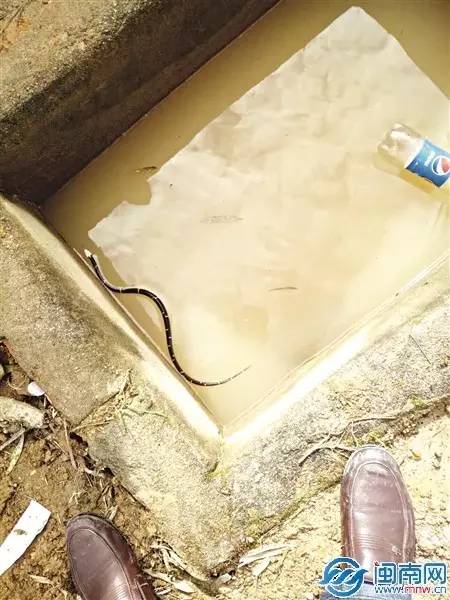
1. The live animal markets of Guangdong province are notorious for the huge array of reptiles, insects, fish and many other creatures destined for the soup pot, dinner plate and traditional medicine cabinet. Luo Xinmei and her NGO, the Asian Turtle Rehabilitation Centre, are trying to save wild animals by changing Chinese tastes. Photograph: John Hooper
广东省的活体动物市场可谓臭名远扬,因为大堆小量的飞禽走兽、山珍海味经过这里而成了人们杯中餐、盘中菜和中药材。罗新梅(音)和她的非政府组织(NGO),亚洲龟康复中心(the Asian Turtle Rehabilitation Centre),正在试图通过改变中国人的饮食习惯拯救野生动物。

2. A sliver of slither to get the saliva going? A handful of snakes is held at arm's length by a market trader in Guangzhou China. Photograph: John Hooper
一块蛇肉就能让你垂涎三尺?中国广州市场上的小贩抓着一把手臂长的蛇。
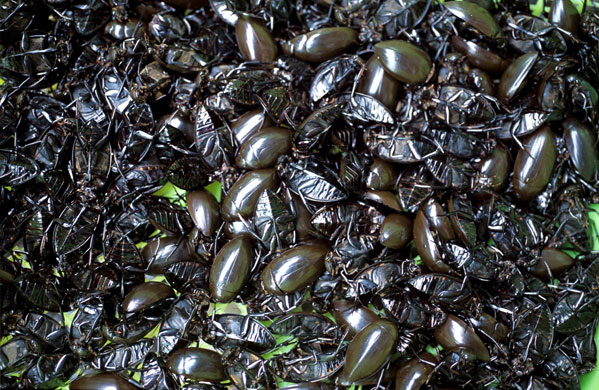
3. A bowl of live water beetles. The water beetle, also known as the 'predacious diving beetle', is often fried with garlic and ginger and sold as a side dish. They can also be steamed and served on watercress with a plum sauce. Photograph: Sinopix Photo Agency Ltd / Rex F/Rex Features
一碗活生生的水甲虫。水甲虫,又称“龙虱”,经常油炸后佐以大蒜和姜作为小菜卖。也可以清蒸后与西洋菜凉拌。

4. A kitten claws at the bars of its cage at Qingping market. Photograph: Joe Tan/Reuters
清平(音)市场上的一只小猫在抓关它的笼子。
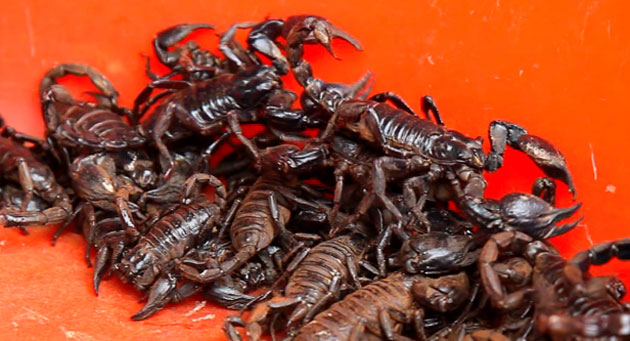
5. Scorpions climb on top of each other like crabs in a bucket at the seaside. Many will end up in soup, prepared as in this recipe from the World Museum, Liverpool. Photograph: John Hooper
蝎子相互爬到对方身上,就像海边水桶中的螃蟹一样。许多蝎子将被做成汤,根据利物浦世界博物馆(the World Museum)的食谱精制而成。

6. Turtle soup is enjoyed not just in China but in many cultures, including the southern US. Photograph: John Hooper
龟鳖汤不只在中国是美味佳肴,在许多文化中都如此,包括美国南部。
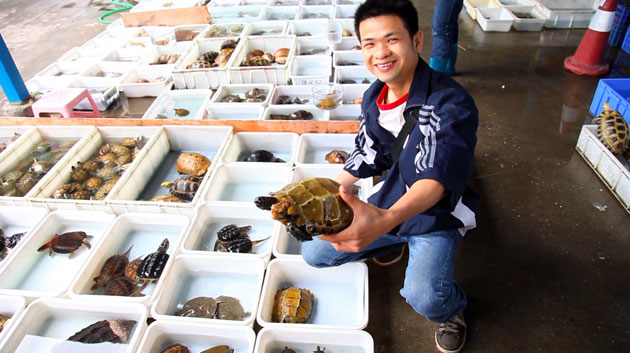
7. Turtles destined for the soup pot. Photograph: John Hooper
这些龟注定要进入汤锅。
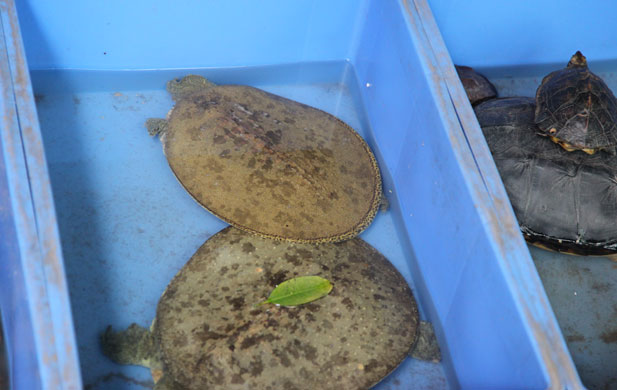
8. The Asian Turtle Rehabilitation Centre is part of a growing and increasingly important band of young Chinese trying to help endangered species by changing consumer attitudes. Photograph: John Hooper
一群年轻的中国人正在试图通过改变人的消费观念拯救一些物种,这个群体正在日益壮大并且越来越重要,亚洲龟康复中心正是其中之一。
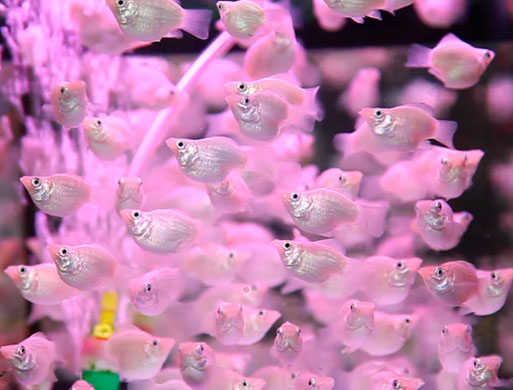
9. Fish at the Taipinp animal market in Guangdong. Photograph: John Hooper
广东太平(音)动物交易市场上的鱼。
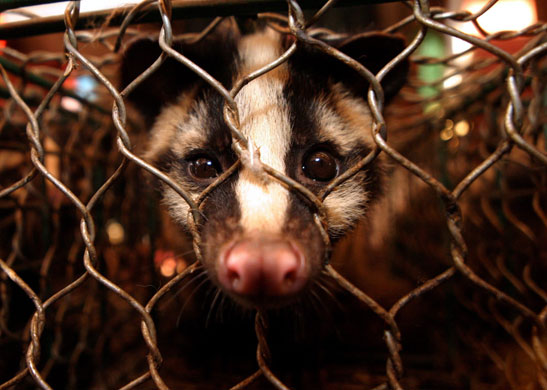
10. Civets are used around the world not only for their meat but for a musk used to stabilise perfume - which animal rights groups object to - and to produce kopi luwak, also known as civet coffee. The creatures eat coffee berries which pass through them undigested; it is said that the process adds to the coffee's flavour, and the beans fetch a high price. Photograph: Paul Hilton/EPA
世界各地的人不只吃麝猫(或灵猫)的肉,还取它的麝香用来稳定香水——这是动物权益组织所反对的,并且用来生产猫屎咖啡(kopi luwak),也称麝猫咖啡。咖啡浆果被这种动物吃下后,经过它们的消化道但并未被完全消化。据说这个过程能给咖啡增添特别的风味,这种咖啡豆价格昂贵。
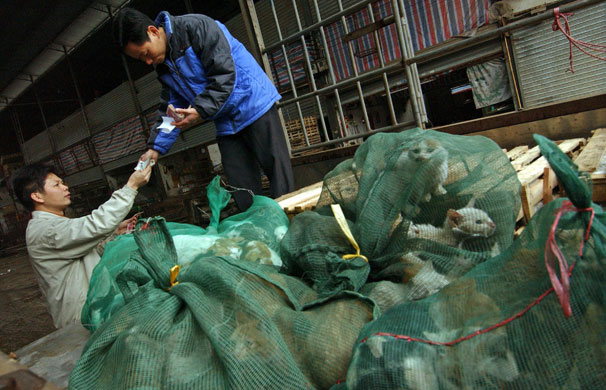
11. Kittens by the bag. Money changes hands for a bag of live cats destined for the table. Photograph: Richard Jones/Rex Features
装在袋子里的猫咪。活生生的小猫经过金钱交易就被送上餐桌。
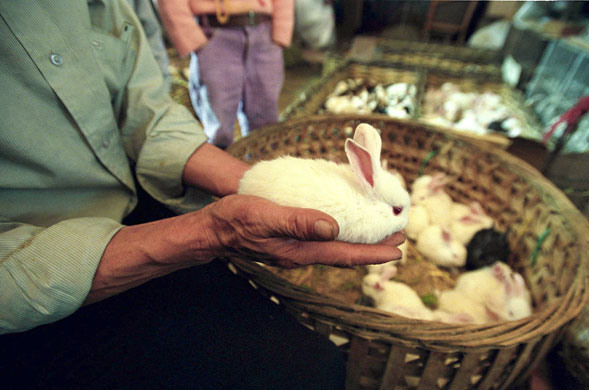
12. Baby rabbits are properly called rabbit kittens. Rabbit meat is low in fat, high in protein and does not have the cholesterol level of chicken, beef or pork. Rabbit can still be found in UK butchers, but less so in supermarkets. Photograph: Sinopix/Rex Features
兔崽被称作兔宝宝更合适。兔肉低脂肪、高蛋白,并且胆固醇的含量又比鸡肉、牛肉和猪肉低。兔子仍能在英国的厨房和超市里找到。
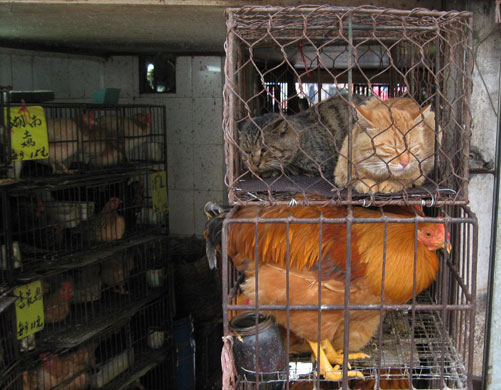
13. Juxtaposition. Cats are kept in a chickenwire cage above a chicken that is less likely to try to scratch or otherwise hurt its handler. Photograph: Reuters
并置。猫也被装在鸡笼里放置在鸡的上面,两者相安无事。
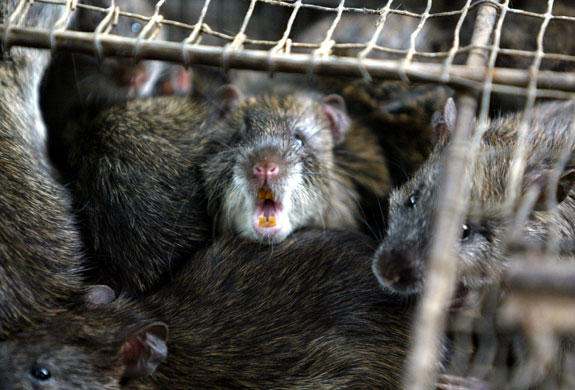
14. Field rats are kept inside a cage before being slaughtered and cooked at a wild game restaurant in Guangzhou, China. Photograph: China Photo/Reuters
中国广州田鼠被装在笼子里等待宰杀烹饪,
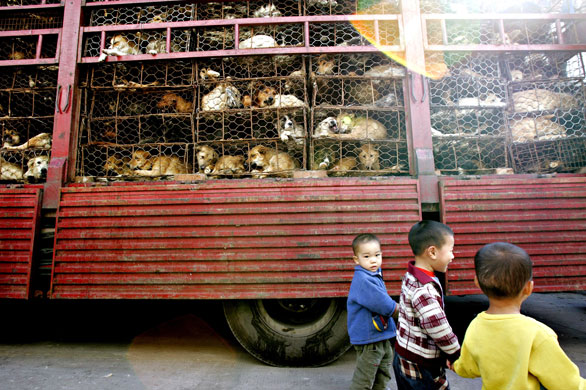
15. Dogs are transported in cages to Guangzhou market. Photograph: Nordahl Aleksander/Rex Features
狗被装进笼子里运往广州市场。
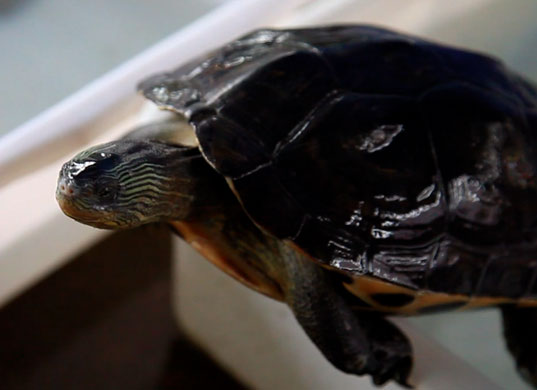
16. A turtle for sale at a market in China. Photograph: John Hooper
中国市场上一只待售的龟。

